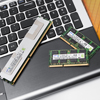
AMD: 45nm, DDR3 and Socket AM3 in 2008
AMD is preparing for a major breakthrough this summer.
This is no wonder, since the first really big change since the K8 core is happening, i.e. the K10 is coming.
The K10 brings a number of innovations that AMD hopes will help squeeze Intel’s competitors. The K10 has a native quad-core architecture, L3 cache and HyperTransport 3 support, further important data is that it is backward compatible with AM2 motherboards. This year and the launch of the K10 are marked by 65-nanometer manufacturing technology.
In 2008, also in the second half of the year, the transition to 45-nanometer manufacturing technology is expected. Here, too, AMD uses SOI (Silicon On Insulator) technology, while Intel stays with the traditional CMOS process. The Deneb FX core will arrive at this bandwidth. The first quad-core AMD CPU, which fits into an AM3 socket, is expected to build on the Deneb core. Importantly, these will also be native quad-core solutions, but instead of DDR2, their memory controller already has DDR3 support. So AMD is waiting again, compared to Intel, switching to DDR3 more than a year later, as was the case with DDR-DDR2.
The cheapest 45-nanometer processor gets the Regor core, which will be a dual-core solution with L3 cache.
This will be followed by Propus, which will also have a CPU with dual-core three-level cache with DDR3 support. Propus will also be made at 45 nanometers.













